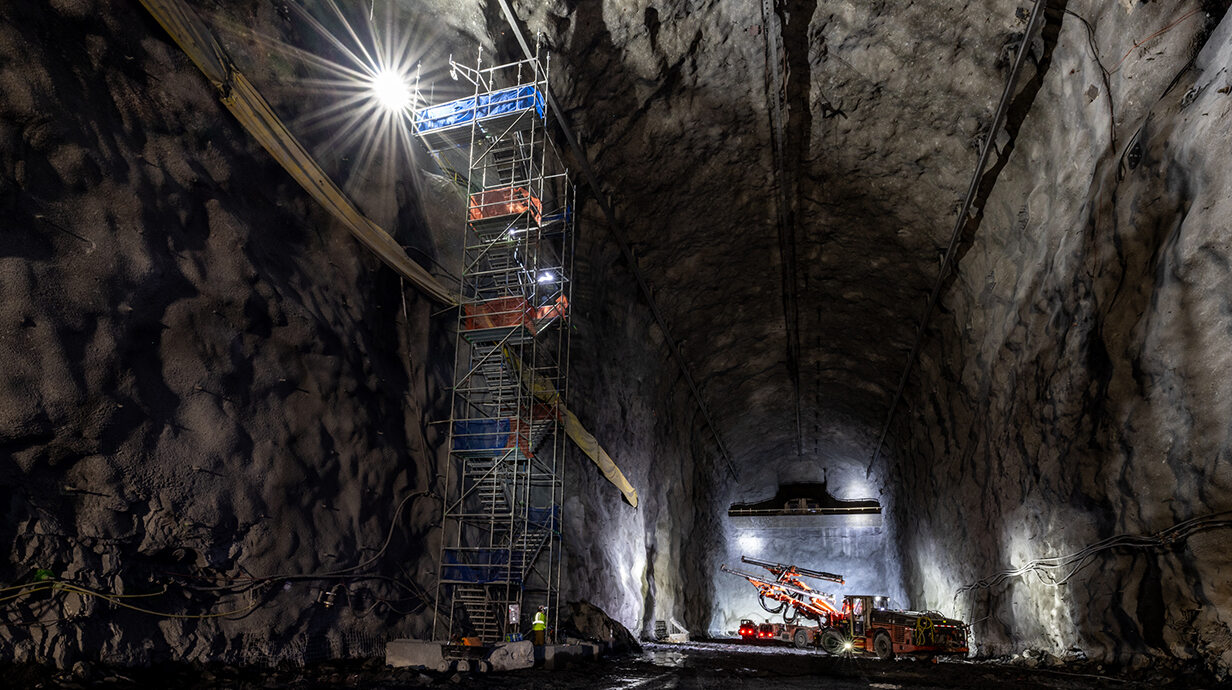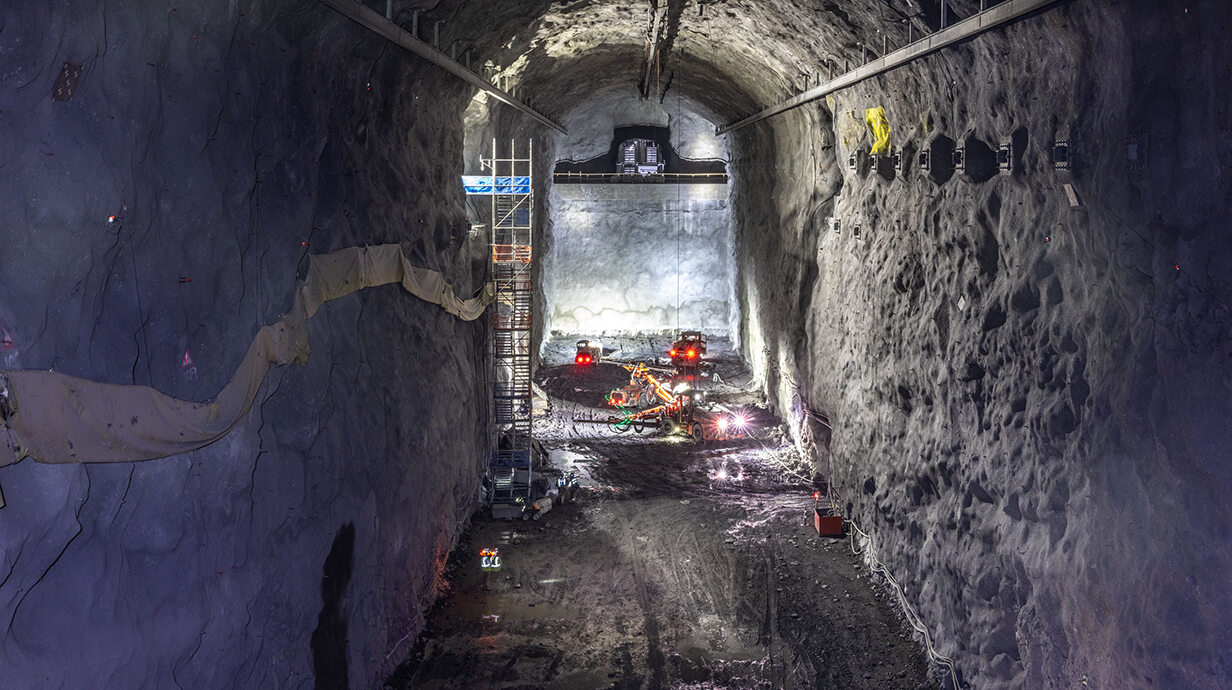UM among 200 institutions worldwide collaborating on neutrino study
 FEBRUARY 2, 2024
FEBRUARY 2, 2024
Researchers are a step closer to having the technology to unravel one of the most mysterious particles in the universe after the U.S. Department of Energy’s Fermi National Accelerator Laboratory announced Thursday (Feb. 1) that excavation on three giant caverns in South Dakota is complete.
In a former gold mine, more than 1,400 scientists and engineers representing 200 institutions, including the University of Mississippi, and 36 countries are building the world’s largest neutrino detection facility. The goal is to better understand the mysterious “ghost particle,” which is approximately 1,000 times smaller than an electron.
UM is among the institutions partnering on Fermilab’s Deep Underground Neutrino Experiment, or DUNE. Gavin Davies, principal investigator for DUNE’s Mississippi group, said the completion of the excavation is a significant step toward better understanding the physics and interactions of neutrinos.

Gavin Davies, UM assistant professor of physics, is among the international team of scientists collaborating on Fermilab’s Deep Underground Neutrino Experiment. Photo by Clara Turnage/UM Marketing and Communications
“This is going to be a new dawn for neutrino physics,” said Davies, an assistant professor of physics who has worked with Fermilab for more than 13 years on the NOvA Project. “The possibilities are endless in my mind for what we can do with a better understanding of neutrinos.”
Although scientists don’t know any practical application for neutrinos, they hope that the particle’s behavior can help them understand complex questions about the universe such as: Why is there more matter than antimatter in the universe? How does an exploding star create a black hole? Are neutrinos connected to dark matter or other undiscovered particles?
“Our job is to understand them,” Davies said. “We have no idea what the full extent of the applications will be, but we didn’t know the application of the electron before we harnessed them for electricity.”
Neutrinos, which are so small that scientists have not found a way to calculate their mass, are abundant across the universe, he said.
“We’re in what is basically a neutrino shower every day,” Davies said. “Fortunately, neutrinos pass right through us.”
Each second, some 100 trillion neutrinos pass through a human body undetected – that’s where the neutrino gets the name “ghost particle,” he said.

A bird’s eye view of one of the large caverns in South Dakota, about the height of a seven-story building, looks over where particle detectors for the Deep Underground Neutrino Experiment will help researchers, including Ole Miss physicists, study the behavior of neutrinos. Photo by Matthew Kapust/Sanford Underground Research Facility
The particles are also notorious for changing their type. Physicists recognize three varieties of neutrinos – muon, tau and electron – but neutrinos have been known to change their variety unexpectedly, he said.
“This is going to be a new dawn for neutrino physics,” said Davies, an assistant professor of physics who has worked with Fermilab for more than 13 years on the NOvA Project. “The possibilities are endless in my mind for what we can do with a better understanding of neutrinos.”
Although scientists don’t know any practical application for neutrinos, they hope that the particle’s behavior can help them understand complex questions about the universe such as: Why is there more matter than antimatter in the universe? How does an exploding star create a black hole? Are neutrinos connected to dark matter or other undiscovered particles?
“Our job is to understand them,” Davies said. “We have no idea what the full extent of the applications will be, but we didn’t know the application of the electron before we harnessed them for electricity.”
Neutrinos, which are so small that scientists have not found a way to calculate their mass, are abundant across the universe, he said.
“We’re in what is basically a neutrino shower every day,” Davies said. “Fortunately, neutrinos pass right through us.”
Each second, some 100 trillion neutrinos pass through a human body undetected – that’s where the neutrino gets the name “ghost particle,” he said.
This research is supported by the Department of Energy grant DE-SC0021616.